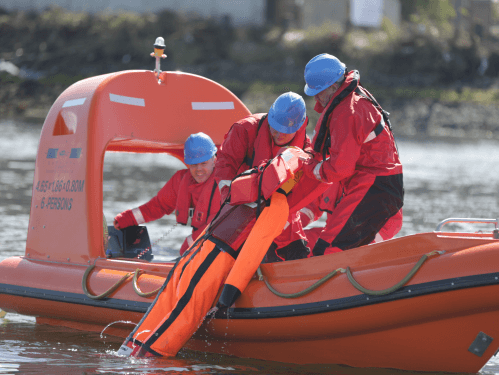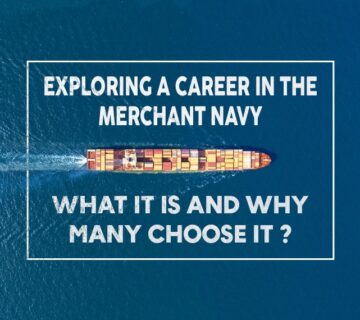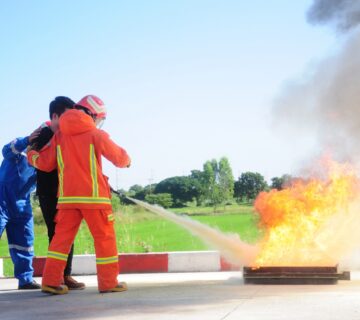Starting a sea career entails not only a passion for the seas but also a sense of safety and professionalism. The stcw course of the International Maritime Organization (IMO) is a compass guiding the beginner through the complexity of maritime training. In this step-by-step guide to STCW training, we shall sail on through PSSR, STSD, and PST. Moreover, we will not forget to mention RPST.
Understanding STCW
IMO is the abbreviation for the International Maritime Organization. It also has a set of standards known as the standards of training, certificate, and watchkeeping (STCW). Its main goal is to ensure that people working in the maritime industry have the appropriate skills and proficiency to carry out their operations efficiently and safely.
Key STCW courses
- Personal safety and social responsibility (PSSR)
SST training must include the PSSR; this is a basic part of this training that aims to raise awareness of safety on-board and on-duty issues. It promotes good communication, teamwork, and appropriate actions during calamities.
- Seafarers training with specific security duties (STSDSD)
STSDSD has a crucial role in times when maritime security is important. It trains seafarers on shipboard security aspects, including how to identify and react to security threats.
- Personal Survival Techniques (PST)
PST is an important part of STCW training that equips seafarers with the necessary skills required for survival during emergency situations at sea. PST covers all the necessary survival techniques, including lifeboat operations and the right way to use a life jacket.
- Personal Survival Techniques Refresher Course (RPST)
Continuous learning is necessary for marine sector development. RPST helps keep seamen up-to-date with the most recent survival techniques; this ability enables them to respond properly to emergencies.
The STCW Course Fees Dilemma
Seafarers wishing to take part in STCW training must be cognizant of the financial angle. While there are STCW course fees, one has to consider the benefits that come with the price tag, such as certificates and skills obtained.
Enrolling in STCW courses
The transition into the maritime industry for an individual who embarks on the STCW courses is a gradual process, with each stage designed to prepare him or her for his or her ultimate goal.
- Research-accredited training centers
Start your journey by carrying out extensive research as well as selecting recognized and maritime authority-accredited training centers. This makes the training comply with international standards, giving you a firm basis for a successful maritime career.
The training centers have to be carefully considered when embarking on STCW courses. Research various alternatives and look for accreditation from trustworthy maritime authorities, including flag administration. Accredited facilities ensure you are trained on a stringent, internationally recognized curriculum.
- Confirming eligibility requirements
Ensure that all requirements have been taken care of before commencing STCW training. This can also entail an age limit, medical fitness, and previous maritime experience. Eligibility confirmation is a prerequisite for an effective learning process.
Discover the qualifications for enrollment in your chosen course and ascertain that you pass the qualifications. Ensure you check the set age requirements, medical clearance, and prior experience. Understanding the eligibility criteria makes the enrollment process smooth and positions you for success in your selected STCW course.
- Submission of Required Documents
Carefully file all requirements needed for enrollment. Such documents can consist of passports, diplomas, and any other papers, according to the training center. A smooth enrollment process entails the timely and correct submission of documents.
Collect all needed papers accurately and carefully. These may include identification documents, educational certificates, and any other documents demanded by the training institution. Submit on time to show that you are an organized student ready for enrollment.
- Participation in classroom activities and practical sessions.
Attend lecture classes, practicals, and other classroom activities. Students engage in holistic learning that involves the provision of theoretical and practical applications. Practical exercises build on your understanding of practical maritime operations, emergency drills, and safety requirements.
Be completely involved in the learning process, attending both the theoretical classes and the practical lessons. Practical exercises allow for the application of the theoretical knowledge gained in classroom lectures. Participating in such sessions provides you with knowledge about important maritime processes, rescue techniques, and security practices and builds up a full pack of skills.
- Successful completion of assessments
Treat approach assessments seriously because, through them, you demonstrate you have understood what is being taught. Completing assessments proves you’re ready to utilize learned ideas in real-life scenarios.
Consider these assessments as chances for you to show your comprehension and mastery of the course materials. Be dedicated when approaching them. Carefully analyze the content that has been discussed in theory and in practice. The completion of assessments is important because it not only confirms your learning but also demonstrates your preparedness to use the obtained knowledge in actual maritime problems.
- Receiving STCW Certification
Successfully complete the course and receive the much sought-after STCW certification. This is an official document that proves that your competency in the industry, as per IMO’s standards and training, has been achieved. Your certification is a passport to the maritime industry that opens doors to various career opportunities while assuring your employers of your dedication to safety and professionalism.
This is a certificate recognized by many and considered one of the most admirable. It’s an official document proving that you are a qualified specialist, having been trained according to worldwide standards. It is thus a very potent accreditation, leading to numerous job openings in the marine sector. Besides confirming your competence, this certification shows prospective employers that you are dedicated to ensuring safety and professionalism.
Conclusion:
Love of the sea alone is not enough for embarking on a maritime career; it requires safety, professionalism, and constant training. STCW training is a vital set of tools for sailing through the perilous seas of the shipping arena. This is because understanding the meaning of courses such as PST, PSSR, STSDSD, and RPST will enable beginners to embark on their journey full of confidence, ready to match up to international standards and excel beyond industry expectations. You must build your maritime future, prioritize safety, and start a voyage to excellence and success.






No comment